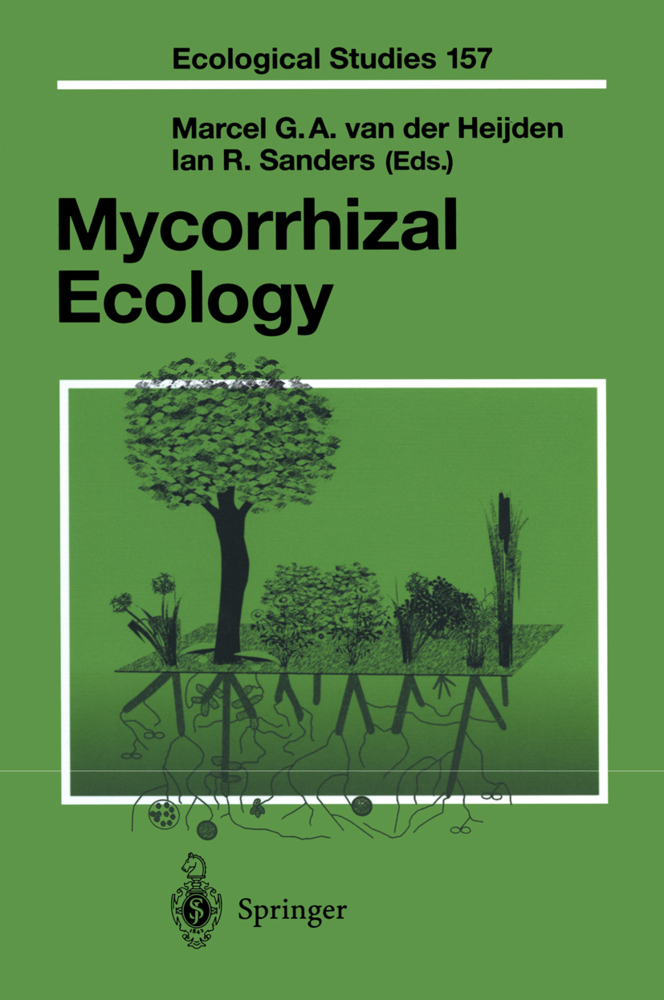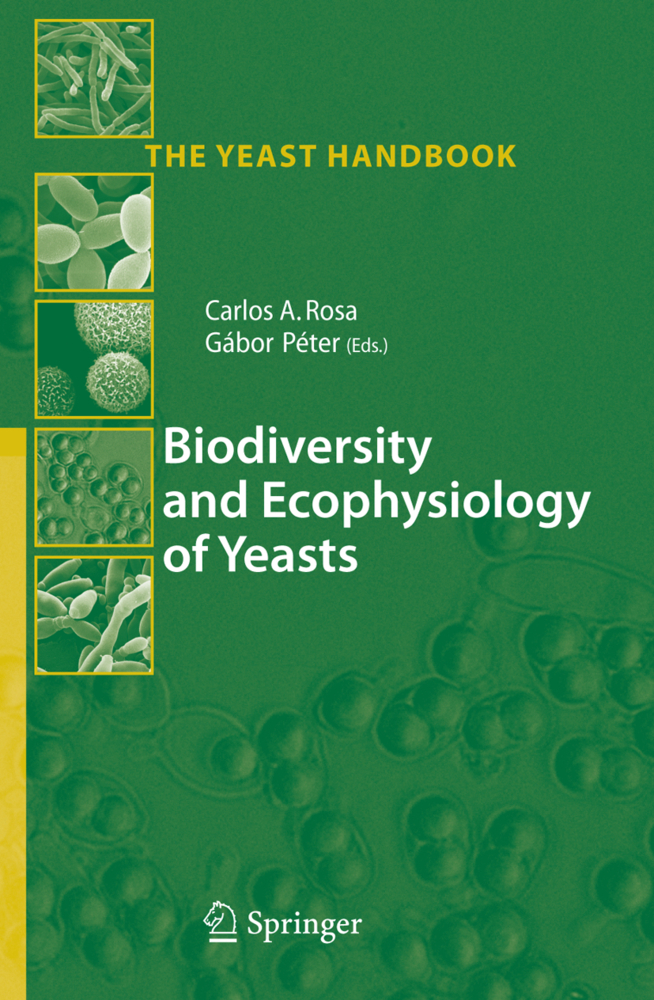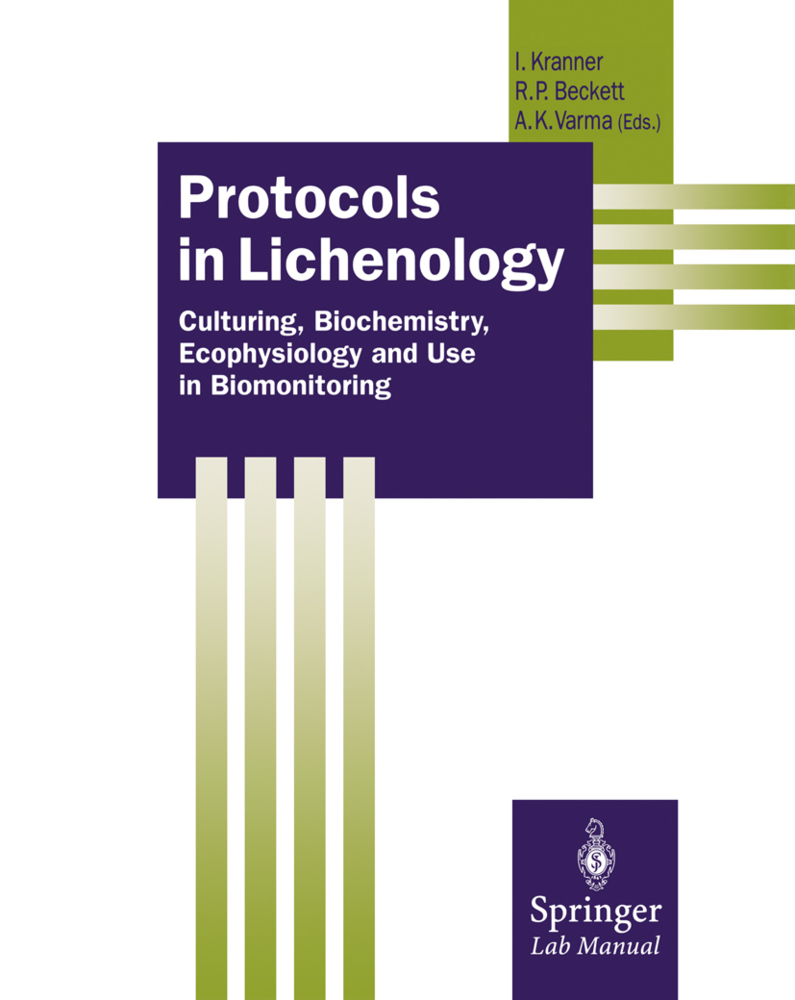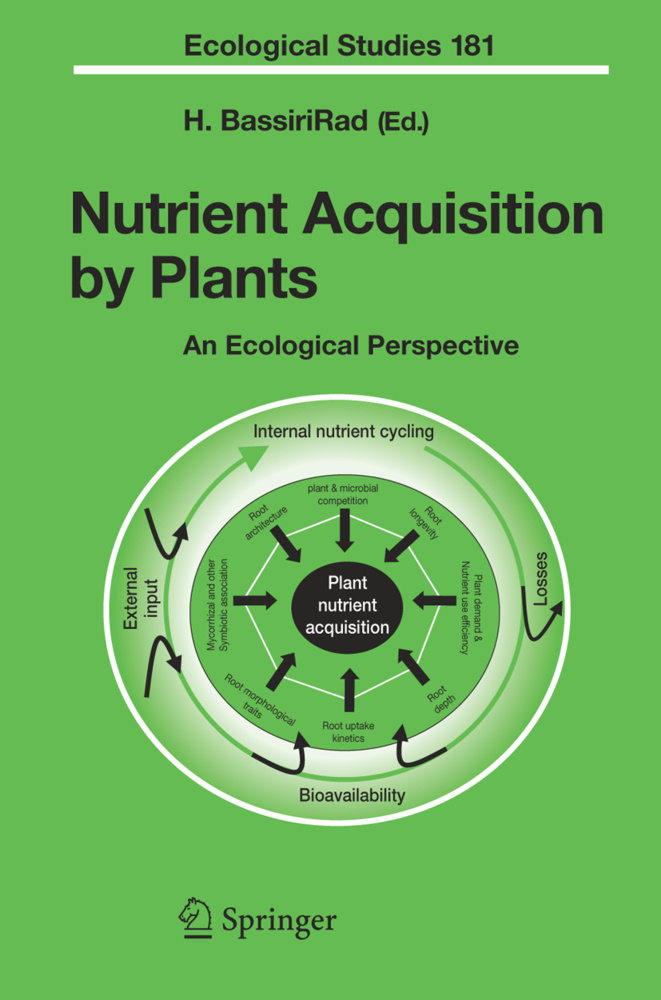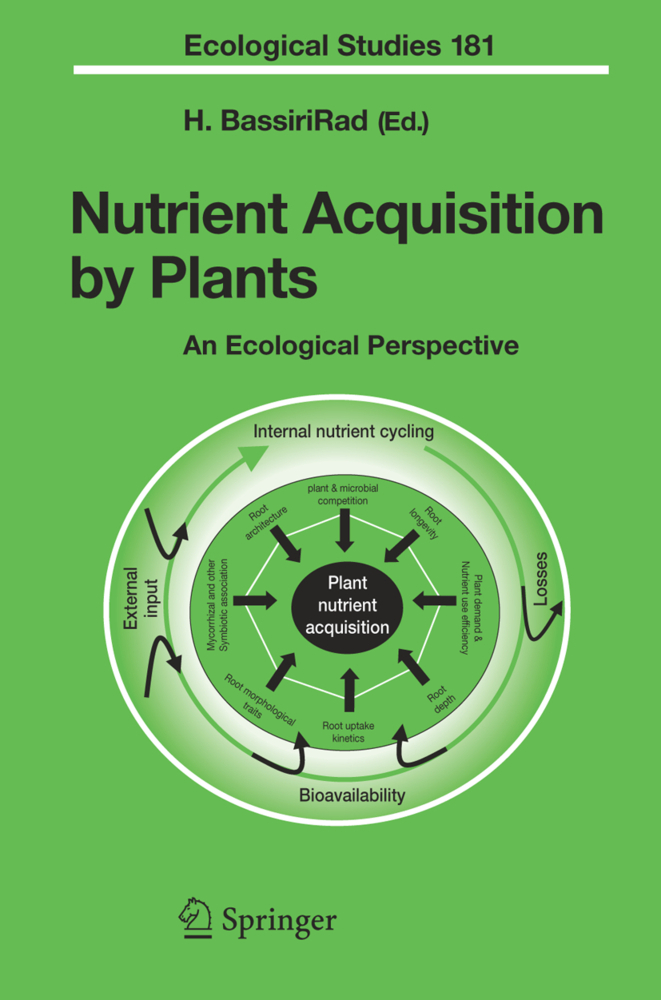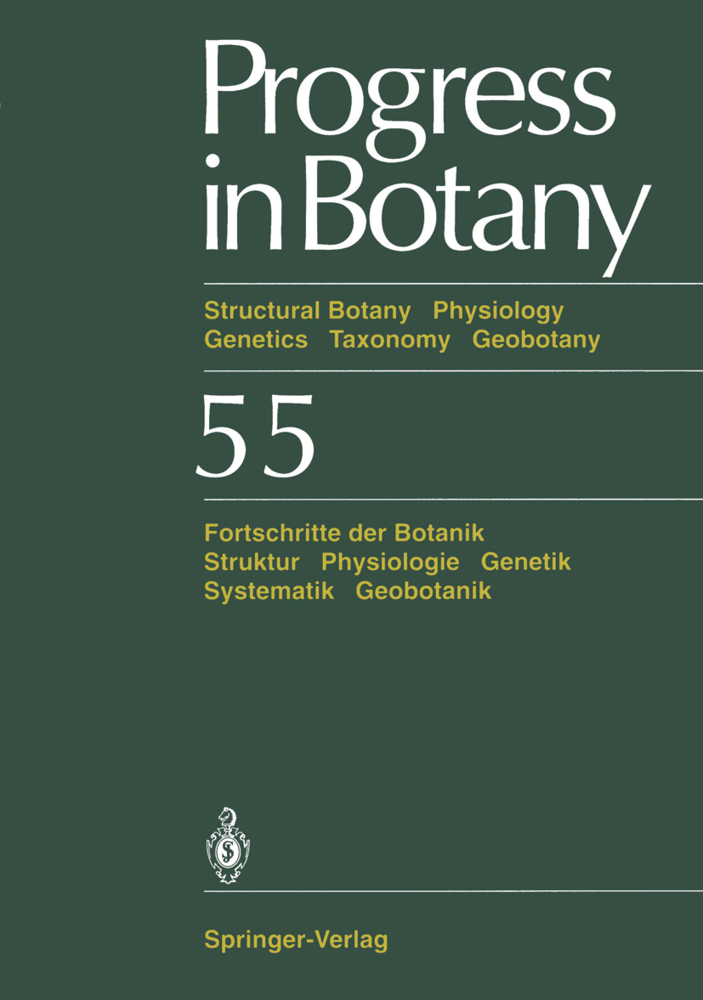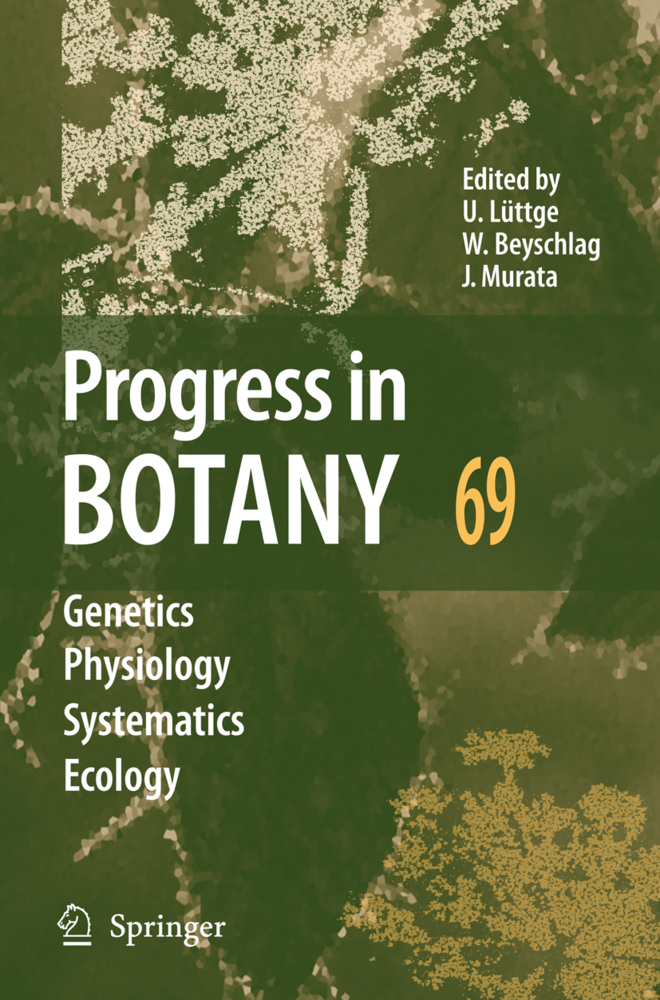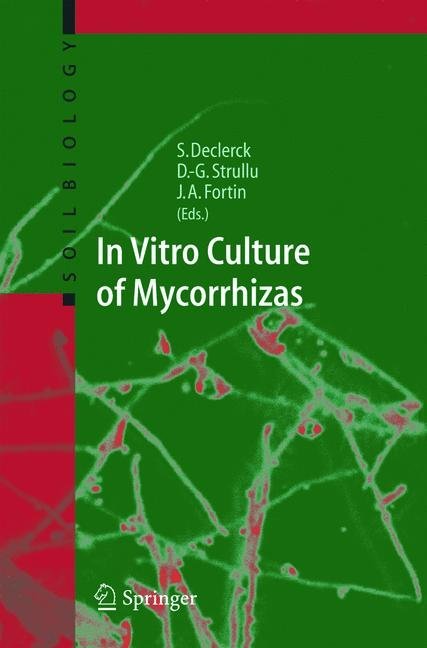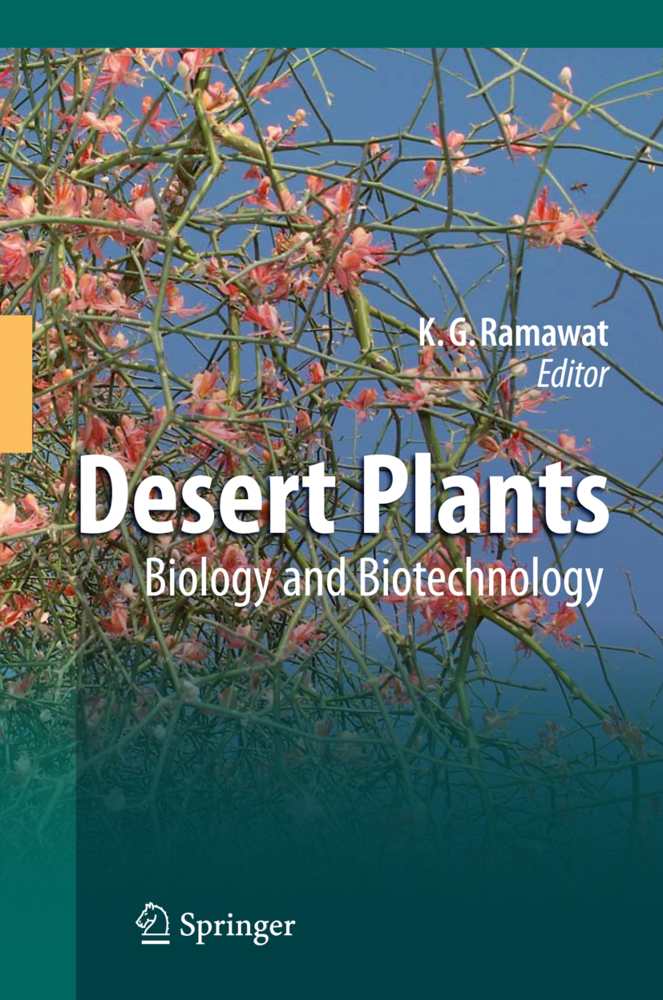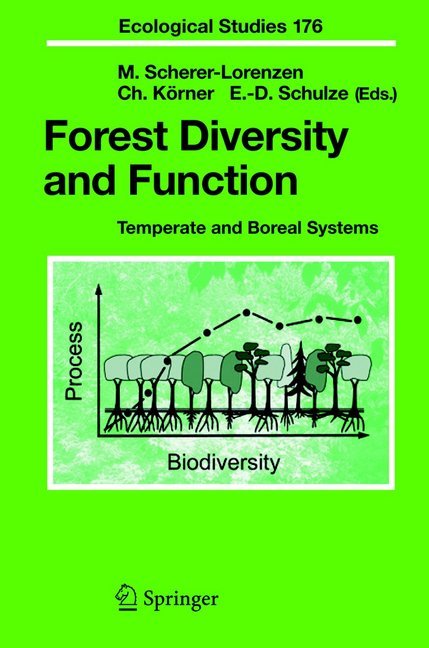Mycorrhizal Ecology
Mycorrhizal Ecology
Plants collaborate with many micro-organisms in the rhizosphere to form mutualistic associations. One of the best examples is the mycorrhizal symbio sis between plants and fungi. Here, fungi support plants with mineral nutri ents and other services and the fungi, in turn, receive photosynthates from the autotrophic plants. Mycorrhizal associations are common in almost all eco systems and 80 % of all land plants associate with these mutualistic soil fungi. There is an increasing awareness among biologists, ecologists and mycolo gists that mycorrhizal associations need to be considered in order to under stand the ecology and evolution of plants, plant communities and ecosystems. In the last decade, many advances and breakthroughs have been made in mycorrhizal ecology. We aim to summarise these advances in this Volume, with special emphasis given to the ecological function of the mycorrhizal symbiosis. This Volume is divided into six sections. The first section gives an intro duction to the mycorrhizal symbiosis and discusses the progress that has been made in understanding the ecological function of this association. The second section deals with the eco-physiology of mycorrhizal plants. It also covers the influence of global changes on the symbiosis. The third section dis cusses the influences of mycorrhizal fungi on biodiversity and ecosystem functioning. It also discusses factors that influence the diversity and structure of mycorrhizal fungal communities. The fourth section shows the multi trophic nature of the mycorrhizal symbiosis.
Section B: Ecophysiology, Ecosystems Effects and Global Change
2 Carbon and Nutrient Fluxes Within and Between Mycorrhizal Plants
3 Function and Diversity of Arbuscular Mycorrhizae in Carbon and Mineral Nutrition
4 Foraging and Resource Allocation Strategies of Mycorrhizal Fungi in a Patchy Environment
5 The Role of Various Types of Mycorrhizal Fungi in Nutrient Cycling and Plant Competition
6 Global Change and Mycorrhizal Fungi
Section C: Biodiversity, Plant and Fungal Communities
7 Diversity of Ecto-mycorrhizal Fungal Communities in Relation to the Abiotic Environment
8 Genetic Studies of the Structure and Diversity of Arbuscular Mycorrhizal Fungal Communities
9 Diversity of Arbuscular Mycorrhizal Fungi and Ecosystem Functioning
10 Arbuscular Mycorrhizal Fungi as a Determinant of Plant Diversity: In Search for Underlying Mechanisms and General Principles
11 Dynamics Within the Plant - Arbuscular Mycorrhizal Fungal Mutualism: Testing the Nature of Community Feedback
Section D: Multitrophic Interactions
12 Mycorrhizae-Herbivore Interactions: Population and Community Consequences
13 Actions and Interactions of Soil Invertebrates and Arbuscular Mycorrhizal Fungi in Affecting the Structure of Plant Communities
14 Interactions Between Ecto-mycorrhizal Fungi and Saprotrophic Fungi
Section E: Host Specificity and Co-evolution
15 Mycorrhizal Specificity and Function in Myco-heterotrophic Plants
16 Specificity in the Arbuscular Mycorrhizal Symbiosis
Section F: Conclusions
17 Mycorrhizal Ecology: Synthesis and Perspectives
Taxonomic Index.
Section A: Introduction
1 Towards Ecological Relevance - Progress and Pitfalls in the Path Towards an Understanding of Mycorrhizal Functions in NatureSection B: Ecophysiology, Ecosystems Effects and Global Change
2 Carbon and Nutrient Fluxes Within and Between Mycorrhizal Plants
3 Function and Diversity of Arbuscular Mycorrhizae in Carbon and Mineral Nutrition
4 Foraging and Resource Allocation Strategies of Mycorrhizal Fungi in a Patchy Environment
5 The Role of Various Types of Mycorrhizal Fungi in Nutrient Cycling and Plant Competition
6 Global Change and Mycorrhizal Fungi
Section C: Biodiversity, Plant and Fungal Communities
7 Diversity of Ecto-mycorrhizal Fungal Communities in Relation to the Abiotic Environment
8 Genetic Studies of the Structure and Diversity of Arbuscular Mycorrhizal Fungal Communities
9 Diversity of Arbuscular Mycorrhizal Fungi and Ecosystem Functioning
10 Arbuscular Mycorrhizal Fungi as a Determinant of Plant Diversity: In Search for Underlying Mechanisms and General Principles
11 Dynamics Within the Plant - Arbuscular Mycorrhizal Fungal Mutualism: Testing the Nature of Community Feedback
Section D: Multitrophic Interactions
12 Mycorrhizae-Herbivore Interactions: Population and Community Consequences
13 Actions and Interactions of Soil Invertebrates and Arbuscular Mycorrhizal Fungi in Affecting the Structure of Plant Communities
14 Interactions Between Ecto-mycorrhizal Fungi and Saprotrophic Fungi
Section E: Host Specificity and Co-evolution
15 Mycorrhizal Specificity and Function in Myco-heterotrophic Plants
16 Specificity in the Arbuscular Mycorrhizal Symbiosis
Section F: Conclusions
17 Mycorrhizal Ecology: Synthesis and Perspectives
Taxonomic Index.
van der Heijden, Marcel G.A.
Sanders, Ian R.
| ISBN | 978-3-540-00204-8 |
|---|---|
| Artikelnummer | 9783540002048 |
| Medientyp | Buch |
| Auflage | 2nd. print. |
| Copyrightjahr | 2003 |
| Verlag | Springer, Berlin |
| Umfang | XXIV, 471 Seiten |
| Abbildungen | XXIV, 471 p. |
| Sprache | Englisch |

